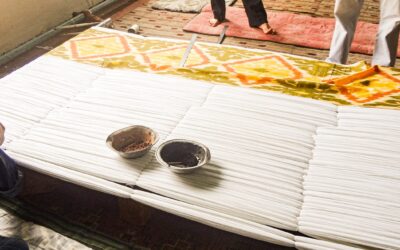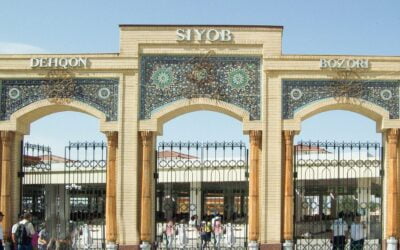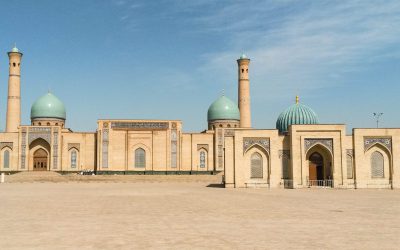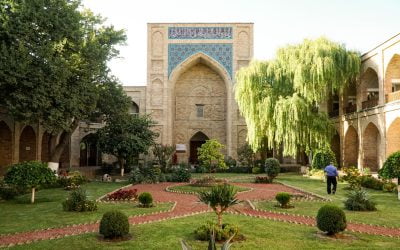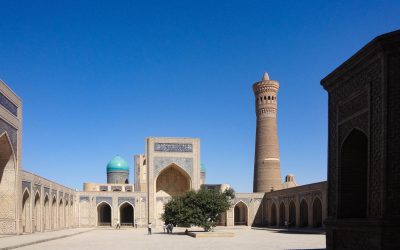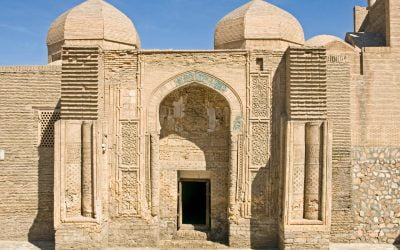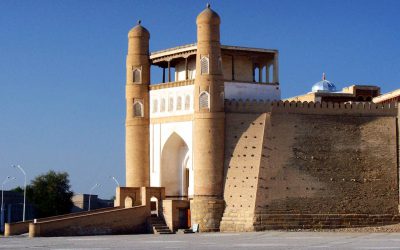REGISTAN SQUARE OF SAMARKAND
Registan Square is the center of Samarkand’s Old City and its main attraction.
HERITAGE SITE | REGISTAN SQUARE OF SAMARKAND
-
-
Known as “the Gem of the East”, Samarkand is one of oldest inhabited cities of the world and as old as Rome itself – over 25 centuries old.
-
The ancient center of city is known as the Registan (sandy place) as this was the sandy area at the center of town where people would gather to hear the khan’s orders, hold celebrations or witness public executions. The square was always a place of business and traders would set up their stalls around the square selling their fresh produce and goods.
-
Even though the square was used for an array of different practices, it has never seized to be the center of the city’s social life.
-
This square used to be the largest in Central Asia at the time of Timur (Tamerlane) and was the central plaza of his renowned capital.
-
The square is lined on three sides by sparkling turquoise-tiled buildings: the Ulugbek, Sher-Dor and Tilla-Qori madrasahs. They were erected by two rulers at different times.
Ulugbek Madrassah
-
The heir of the great state of the Timurids, known better as the ‘scientist on the throne’, Ulugbek, assumed authority in 1409. In 1417, he ordered the construction of the madrassah that would later be renamed in his honour. It was the first construction on the Registan Square as was hailed as an as architectural wonder all across Central Asia.
-
Housing approximately 100 students and their lecture rooms, the madrasah portal looks out onto the square, completed with two tall minarets in the corners. The portal is adorned with patterns of ten pointed stars symbolising the sky, and astronomy. During the 15th century it was the seat of scientific learning with Ulugbek personally lecturing here.
-
Students learned a host of subjects ranging from theology to philosophy, astronomy and mathematics.
-
Along with the madrasah, a caravanserai and a khanqah (sufi prayer center) were also constructed by Ulugbek.
Sher-Dor Madrassah
-
In 1612, 200 years after Ulugbek, Yalangtush Bahadur was appointed the emir of Samarkand. He was the governor-general of the Bukhara khans and by that time, he was already ruling feudal principalities, was known as a skillful politician and an educated commander.
-
Being a ruler of the city, he decided to construct another madrasah on the Square of Registan opposite the building erected by Ulughbek. According to the project of architects, the new madrasah was supposed to be located on the eastern side of the square and be a mirroring reflection of existing building on Registan. The ruins of Ulugbek’s khanqah (sufi prayer center) was demolished and its materials used for the construction of the new madrasah.
-
The madrasah took the name Sher-Dor after the two large golden tigers (sher) carrying a sun on their backs while in pursuit of a white fallow-deer.
Tilla-Qori Madrassah
-
Ten years after the construction of the Sher-Dor madrassah, the ruler of Samarkand Yalangtush Bahadur planned to erect another building to complete the ensemble on Registan Square.
-
The construction began in 1646, in the northern part of the Square, on the site of the caravanserai. The architect decided that the third madrasah would be similar in design to the existing buildings to ensure harmony of proportion between them all.
-
The construction took 14 years and was completed in 1660CE. Thanks to its rich decoration and the ‘kundal’ (gilt) painting technique used for decoration, it was named the Tilla-Qori (gilded) Madrasah.
-
It has been six centuries since the first madrasah was erected on the Square and the importance of Samarkand waxed and waned over the centuries. In its heyday, the madrasahs were the most sought after institutes in the world and during the most distressing times they were relegated to being shelters for wild animals.
-
Today, the beautiful façades have been restored as have their interiors but they are void of any learning and teaching. The institutes that were once the highest seats of learning are used for hosting various festivals, holidays and shows.
-


